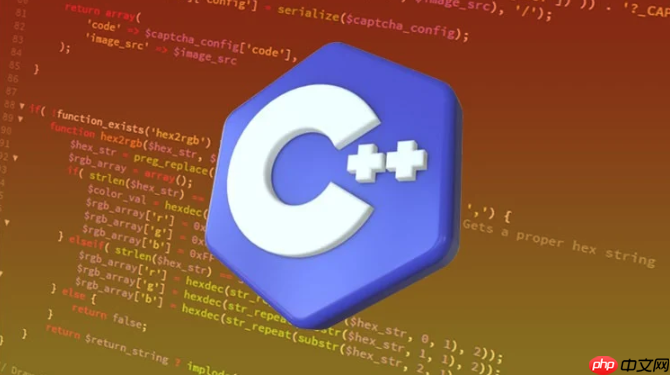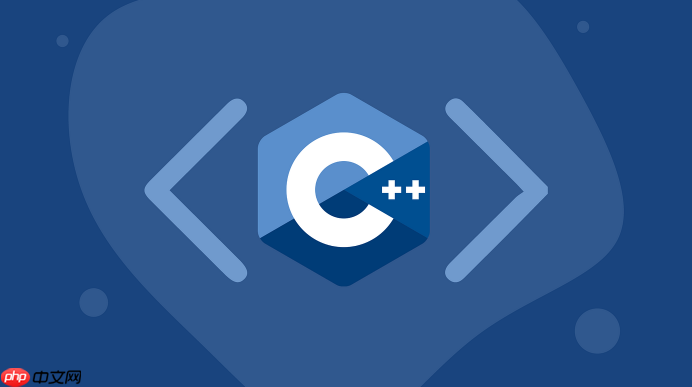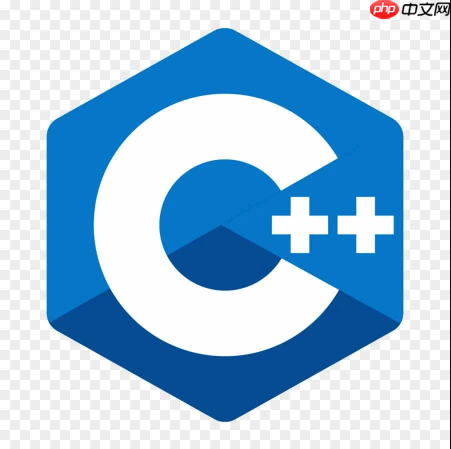1.结构体作为函数参数时,值传递会复制整个结构体,而引用传递只传递结构体的引用;2.对于大型结构体,引用传递效率更高,小型结构体则值传递可能更快;3.若函数需要修改结构体内容,必须使用引用传递;4.若函数不修改结构体且想避免复制开销,可使用const引用;5.选择传递方式应根据结构体大小和修改需求综合考虑。值传递与引用传递各有优劣,关键在于结构体大小和是否需要修改结构体内容,在实际编程中应结合具体情况选择最佳方式以兼顾性能和代码可读性。

C++中,结构体作为函数参数时,值传递会复制整个结构体,而引用传递则只传递结构体的引用(或指针)。通常,对于大型结构体,引用传递效率更高,因为它避免了不必要的内存复制。但对于小型结构体,值传递可能更快,因为省去了指针解引用的开销。选择哪种方式取决于结构体的大小和函数内部对结构体的修改需求。

值传递与引用传递在C++中处理结构体参数时各有优劣,关键在于结构体大小和修改需求。
结构体的大小是决定使用值传递还是引用传递的关键因素。当结构体很小(例如,只包含几个
int
double
立即学习“C++免费学习笔记(深入)”;

但当结构体变得很大,包含大量的成员变量,或者包含复杂的嵌套结构时,值传递的开销会显著增加。每次函数调用都需要复制整个结构体,这会占用大量的内存和CPU时间。在这种情况下,引用传递的优势就体现出来了。引用传递只需要传递结构体的地址,避免了大规模的数据复制,从而提高了效率。
一个简单的例子:

#include <iostream>
#include <chrono>
struct SmallStruct {
int a;
int b;
};
struct LargeStruct {
int data[1000];
};
void valuePassSmall(SmallStruct s) {
s.a = 10;
}
void referencePassSmall(SmallStruct& s) {
s.a = 10;
}
void valuePassLarge(LargeStruct s) {
s.data[0] = 10;
}
void referencePassLarge(LargeStruct& s) {
s.data[0] = 10;
}
int main() {
SmallStruct small;
LargeStruct large;
// 测试小型结构体
auto start = std::chrono::high_resolution_clock::now();
for (int i = 0; i < 1000000; ++i) {
valuePassSmall(small);
}
auto end = std::chrono::high_resolution_clock::now();
auto duration = std::chrono::duration_cast<std::chrono::microseconds>(end - start);
std::cout << "Value Pass Small: " << duration.count() << " microseconds" << std::endl;
start = std::chrono::high_resolution_clock::now();
for (int i = 0; i < 1000000; ++i) {
referencePassSmall(small);
}
end = std::chrono::high_resolution_clock::now();
duration = std::chrono::duration_cast<std::chrono::microseconds>(end - start);
std::cout << "Reference Pass Small: " << duration.count() << " microseconds" << std::endl;
// 测试大型结构体
start = std::chrono::high_resolution_clock::now();
for (int i = 0; i < 1000000; ++i) {
valuePassLarge(large);
}
end = std::chrono::high_resolution_clock::now();
duration = std::chrono::duration_cast<std::chrono::microseconds>(end - start);
std::cout << "Value Pass Large: " << duration.count() << " microseconds" << std::endl;
start = std::chrono::high_resolution_clock::now();
for (int i = 0; i < 1000000; ++i) {
referencePassLarge(large);
}
end = std::chrono::high_resolution_clock::now();
duration = std::chrono::duration_cast<std::chrono::microseconds>(end - start);
std::cout << "Reference Pass Large: " << duration.count() << " microseconds" << std::endl;
return 0;
}这段代码通过循环调用来模拟大量的数据传递,并使用
std::chrono
如果函数需要修改结构体内部的成员变量,那么只能使用引用传递或者指针传递。值传递会将结构体复制一份,函数内部对副本的修改不会影响原始结构体。
考虑以下场景:
struct Point {
int x;
int y;
};
void movePointByValue(Point p, int dx, int dy) {
p.x += dx;
p.y += dy;
// 这里的修改不会影响main函数中的point
}
void movePointByReference(Point& p, int dx, int dy) {
p.x += dx;
p.y += dy;
// 这里的修改会影响main函数中的point
}
int main() {
Point point = {1, 2};
movePointByValue(point, 3, 4);
std::cout << "Point after value pass: x = " << point.x << ", y = " << point.y << std::endl; // 输出 x = 1, y = 2
movePointByReference(point, 3, 4);
std::cout << "Point after reference pass: x = " << point.x << ", y = " << point.y << std::endl; // 输出 x = 4, y = 6
return 0;
}这个例子清晰地展示了值传递和引用传递在修改结构体时的区别。如果函数需要修改结构体,那么必须使用引用传递。
如果函数不需要修改结构体,但又想避免值传递的开销,可以使用
const
const
例如:
void printPoint(const Point& p) {
std::cout << "x = " << p.x << ", y = " << p.y << std::endl;
}使用
const
选择值传递还是引用传递取决于结构体的大小和函数内部对结构体的修改需求。小型结构体可以使用值传递,大型结构体应该使用引用传递。如果函数不需要修改结构体,可以使用
const
以上就是C++结构体如何作为函数参数 值传递与引用传递效率比较的详细内容,更多请关注php中文网其它相关文章!

每个人都需要一台速度更快、更稳定的 PC。随着时间的推移,垃圾文件、旧注册表数据和不必要的后台进程会占用资源并降低性能。幸运的是,许多工具可以让 Windows 保持平稳运行。

Copyright 2014-2025 //m.sbmmt.com/ All Rights Reserved | php.cn | 湘ICP备2023035733号